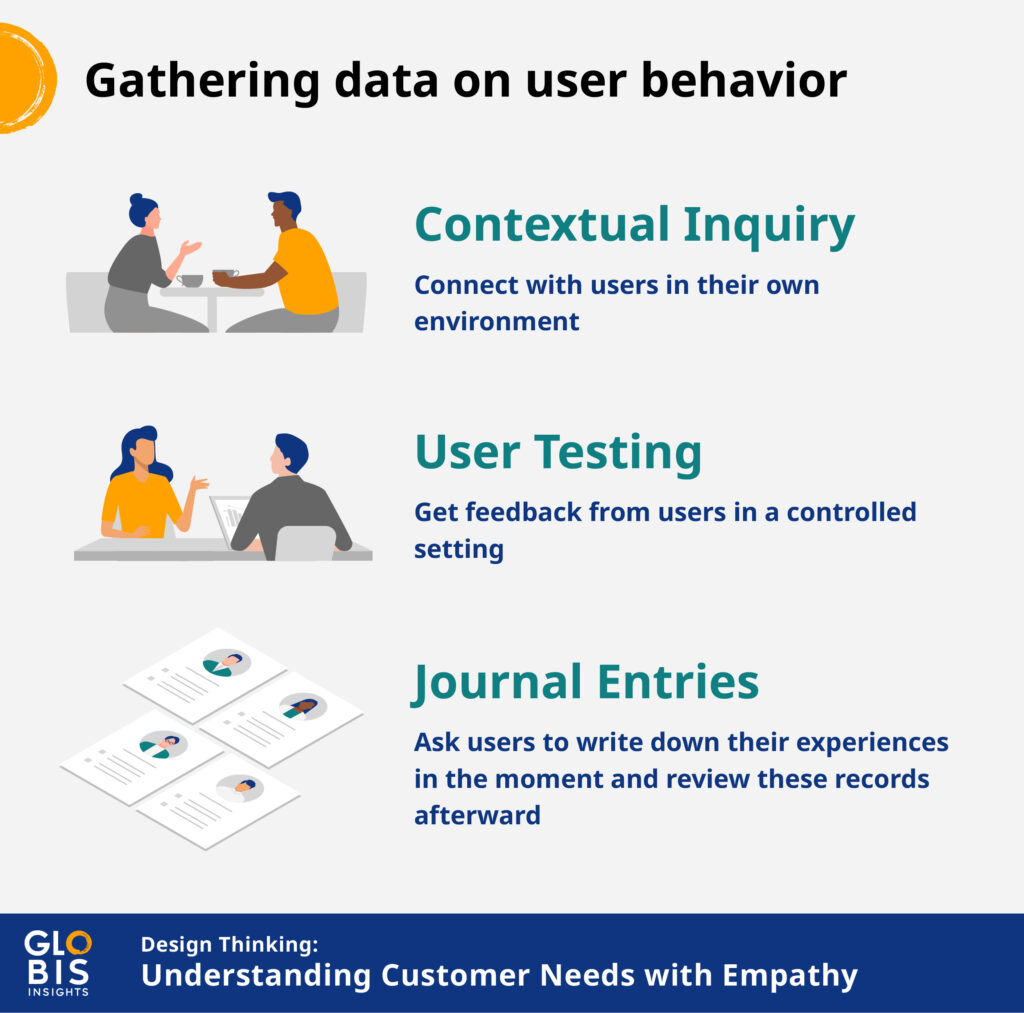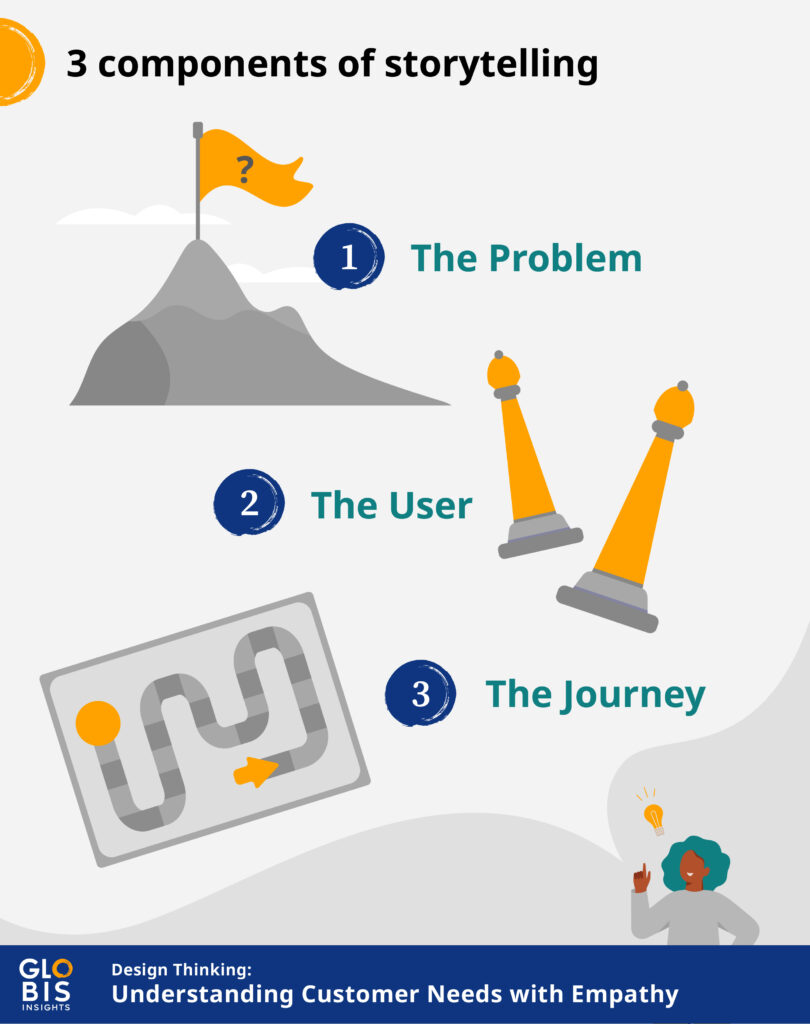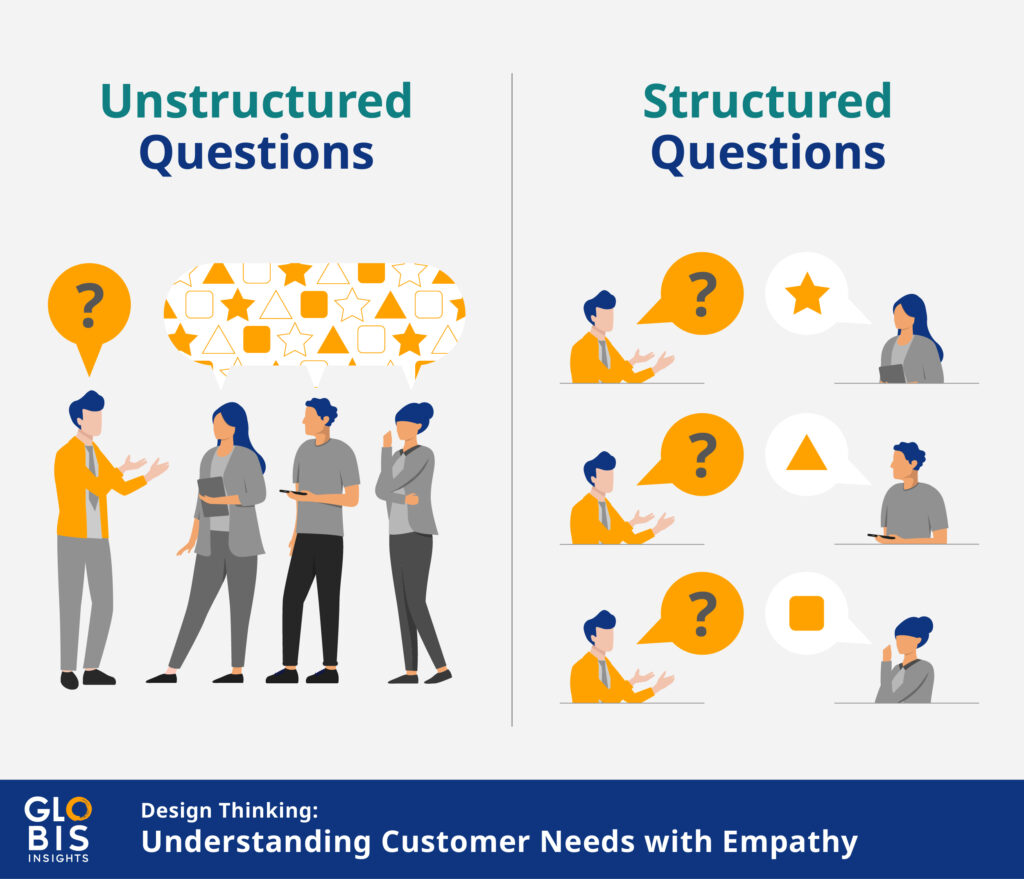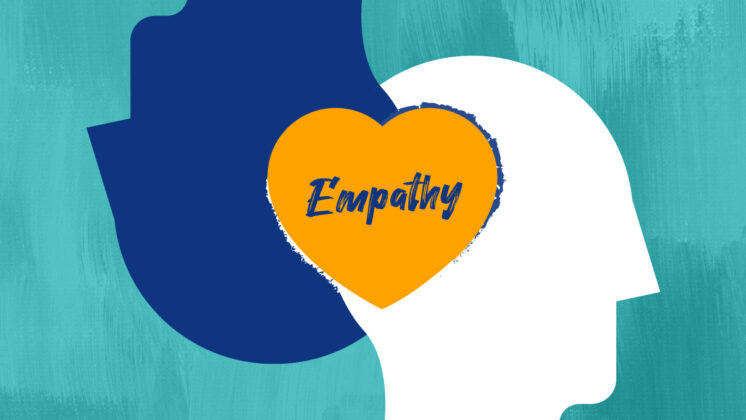It’s Friday night. You’re scrolling through social media when an ad grabs your attention and you think, “This is exactly what I need.” Whether it’s a convenient fanny pack or an ergonomic gaming chair, a company has identified an issue in your life and designed a product to solve that problem.
This is the first phase of design thinking: empathy. More specifically, empathizing with your customer needs. While it may seem like product design 101, you’d be surprised at how many companies skip over this step and jump straight into production.
Next Article
Design Thinking Principles: A How-To Guide
What does empathy mean for design?
According to the Interaction Design Foundation, “Empathy is the ability designers gain from research to understand users’ problems, needs and desires fully so that they can design the best solutions for users.”

There are 3 types of empathy designers rely on to connect with users, they are:
- Cognitive Empathy: Understanding someone else’s way of thinking.
- Compassionate Empathy: Connecting with someone else’s experience and wanting to help them.
- Emotional Empathy: Feeling the same emotions as someone else.
Who are your users and what do they want?
Before you even start doodling on a napkin, you should understand who you are designing for. Many people have heard of user personas and the complex data that goes into creating them. But it doesn’t need to be so detailed at this point.

Start with a big-picture perspective. As you learn more about your users’ needs, you can zone in on the more minute details (age, region, socio-economic status, etc.)
Start by asking:
- What problem are we solving?
- Who benefits most from this solution?
- What is the customer journey from research to purchase?
Drawing on emotional intelligence, empathy requires you to connect with the pain points a user runs into every step of the customer journey. The more you can understand what your customer base is feeling and thinking, the better your design will be.
Watch and learn from user behavior
After you’ve gotten an idea of the user’s current needs, it’s time to observe them out in the wild.
The best way to understand how people interact with anything your product is to observe and collect data. While this may sound like setting up the camera for a nature documentary, it’s key for capturing both conscious and subconscious behaviors.

How can you get accurate data? As with all design thinking, there is more than one way. Some ideas include:
- Contextual inquiry: ask users about their experience while they are in their natural environment
- User testing: get feedback from users in a controlled setting
- Journal entries: ask users to write down their experiences in the moment and review these records afterward
Use storytelling to understand the user experience
Sometimes it can be difficult to fully grasp the customer journey and to emotionally connect with users, especially if your personal experience is far removed from theirs.
A common tool used to combat this issue in the design thinking framework is storytelling. From a young age, we’re encouraged to identify with fictional characters such as Winnie the Pooh or Bluey, and a user story works in much the same way.
By creating a compelling narrative, you’re helping to get designers on board with the product idea and to understand the user’s motivations.
And if you’re worried your writing skills aren’t up to snuff, don’t sweat it. We’re not looking for the next Tolkien. Your story just needs to include three components:
- Domain: What action is the person trying to take? (The problem)
- Players: Who is this individual? (The user)
- Story flow: How do they go about it? (The journey)
Ask questions and collect feedback
Finally, the simplest way to get accurate and unfiltered user experiences is to simply ask people. While a customer focus group may be the first image that comes to mind, it’s up to you whether you want a structured or unstructured interview format.
- Unstructured: This free-flow style leaves more room for users to go off script and share details that you maybe didn’t think to ask about.
- Structured: In this format, you’re asking everyone the same questions which makes it much easier for data comparison.

Is empathy really that important?
Still not sure how essential empathy is in design thinking? Then there’s always the example of what happens when you skip over this step in Juicero. The smoothie pack squeezing machine quickly lost market share when people realized that just using your hands did a better job. It added hurdles to the user experience instead of removing them.
But overpriced and obsolete kitchen tech aside, keep in mind that most purchasing decisions are made subconsciously. While we would all like to believe that we use rational thought when we decide to buy something, research shows that emotion plays a much stronger role.
Empathize with your user base and you’ve made a solid step towards creating a product people will connect with and want to own.




